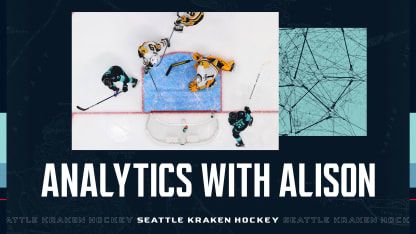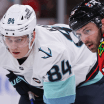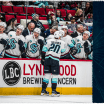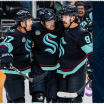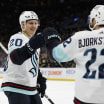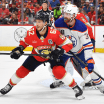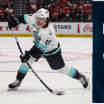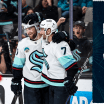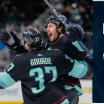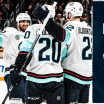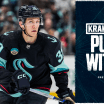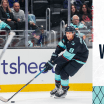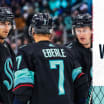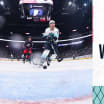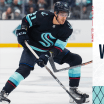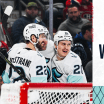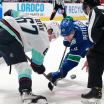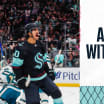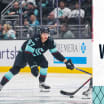Almost unanimously, these hockey minds agreed with Brown that location data was the most important piece of information that went into their calculations.
"Shooting distance is key," said Josh Younggren, who created
Evolving Hockey
with brother Luke. "Everything else fills in gaps."
Just as with all these models, after considering location, the Younggrens (whose full model write up can be found
HERE
) manipulate the data they have to understand what else might have happened in the game. For example, the Evolving Hockey model includes the seconds between a shot and prior on-ice events as well as locations of each to understand if a chance came off a rebound or second-chance effort.
MoneyPuck.com's Peter Tanner and NaturalStatTrick.com's Brad Timmins take a similar approach in their model for rebounds and, as each model is unique, add different flavors of analysis. Tanner
evaluates angle change from a prior shot as well
and over at HockeyViz.com, Micah Blake McCurdy has built a model that looks at "contextual factors that are meant to proxy for pre-shot movement and how much congestion is between the shooter and the net, like skater numbers and if the shot is a rebound shot or on the rush."
It would be easy to question why these models don't "include" shooter information, but each of these analysts articulated specific reasons why. Tanner applies shooter information in a separate "talent adjusted goals" model; and McCurdy described his thought process as wanting to first answer the question of "if a certain shot happens in a certain way what is the likelihood it becomes a goal" and then apply a different level of analysis to answer, "but what if it was Jordan Eberle shooting on a specific goaltender?" Separating the two questions removes some implicit bias that the Younggren twins acknowledged as wanting to mathematically eliminate as well. (More on this to come!)
And what about all that other pre-shot movement? Our eyes tell us it matters, Brown mentioned these factors, but they aren't in any of these models? Don't think these creators have excluded it by choice. Each of these model architects was emphatic about wanting to include passing data, screens, and even goaltender position into their analysis - the data just simply isn't available to the public yet.
What else was on wish lists? Defensive pressure and even post-shot puck location.
The good news is that each of these hockey minds is diligent in their efforts to keep improving their models. Every single one acknowledged intentional recurring tuning of their calculations to ensure that the outcomes are what they should be, and, as new information becomes available you can bet they will be chomping at the bit to include it in the most appropriate way.
Ultimately, expected goal measures are the next step in hockey analysis. They give context to the shots that a team or a player takes in any given game or across any given season and tell us more than just "who had the most shots." While not perfect, we are lucky to have a variety of models we can use to inform our understanding of the game.
